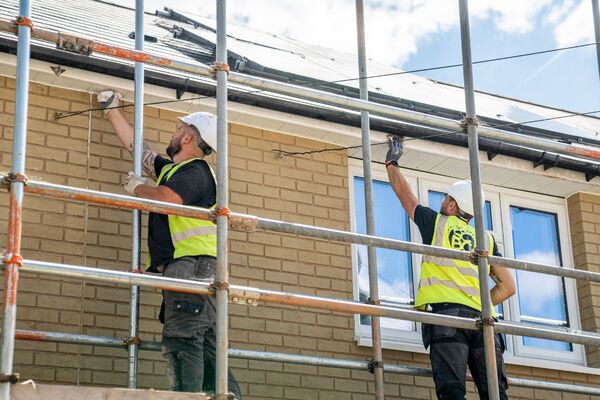You are viewing 1 of your 1 free articles
Why we embarked on a £275m refinancing deal
Trafford Housing Trust’s director of finance, Helen Rourke, explains the thinking behind the major deal announced last week
Over the past 10 years the financial resilience of Trafford Housing Trust has been continually strengthened, and we have seen steady growth in the value of our assets.
The trust had also increased its funding over this period, enabling us to undertake a relatively modest volume of housing development.
“We needed to fundamentally rethink our entire funding strategy.”
But as we reached the end of our last development cycle, and having utilised the capacity within our existing funding, we realised that to achieve our ambitious plans to build thousands of new homes, both in partnership and on our own, meant we needed to fundamentally rethink our entire funding strategy.
There was more than £100m of latent capacity locked within our asset valuation; we wanted to release that value and use it to deliver against our vision of being a major housing developer across the whole of the North West.
Read more about THT’s financial plans

Trafford strikes £275m funding deal
L&Q enters deal with Manchester landlord
We also wanted increased flexibility to allow us to grow and diversify the business – as the covenants and conditions, which had served us well up to this point, were now constraining our ability to respond to new opportunities and enter into joint ventures.
“We explored everything from bonds and institutional investment to social lending and local investment funds.”
We wanted the freedom to increase our funding and change the group structure to deliver new services and products.
So, having given ourselves permission to think and act boldly, we began a journey through the myriad of funding options available to us.
We explored everything from bonds and institutional investment to social lending and local investment funds, always keeping in mind that our aim was a structure which would maximise the trust’s financial capacity and minimise commercial constraints.
As a result of this review of our options, and an assessment of how they matched our objectives, we published a new funding prospectus.
Contained within it was a series of big asks, the main one being a request for unprecedented levels of on-lending capability and freedom.
However, I felt we had an exceptionally strong offer – the financial strength of the trust’s core business meaning it could support the totality of new funding being sought.
In particular, we were able to outline a structure which ringfenced any risk associated with new activities, including (crucially) housing market exposure.
This, together with our outstanding track record of delivering both market rate new homes and affordable homes, meant the risk from a funder’s perspective was greatly reduced.
Following the publication of the prospectus, the trust’s position as an attractive vehicle for investment was confirmed when we received the initial offers from the market.
“I was taken aback as to how enthusiastically the market responded.”
From across a range of very competitively priced bids from banks, building societies and institutional investors, we were looking at £875m worth of finance options.
Despite my confidence in the strength of our pitch, and the massive potential the trust had to offer, I was taken aback as to how enthusiastically the market responded.
This was new territory for us, and we had no real idea about how a results-driven financial sector would perceive a 9,000-home housing association in Greater Manchester – albeit one that was ambitious, progressive and with a clear profit-for-purpose ethos.
A fear that our aspirations were out of kilter with the demands of a risk-averse investment market was always in the back of my mind.
The positive reaction of investors allayed any such fears, and we found ourselves in the fortunate position of being able to pick and choose from the various offers.
We were able to look for the conditions best aligned with our needs for flexibility and freedom, eventually building a blended maturity portfolio at a weighted average cost of capital significantly lower than our then-existing funding.
But it’s a two-way street, and we had to meet a number of potential investors to demonstrate the strength of our offer and prove we had the robust management, skill set and capacity to deliver on our promises.
This part of the process is critical, ensuring those investing in you fully understand your strategic direction and your vision for the organisation.
I believe that with Lloyds, Pension Insurance Corporation, BlackRock and Yorkshire Building Society, Trafford Housing Trust has a series of partners who ‘get us’, get what we do, and get what we want to do in the future.
And as we continue to grow and diversify, I am confident the relationship with our financial partners will strengthen, flex and evolve to help us get there.
Helen Rourke, director of finance, Trafford Housing Trust








